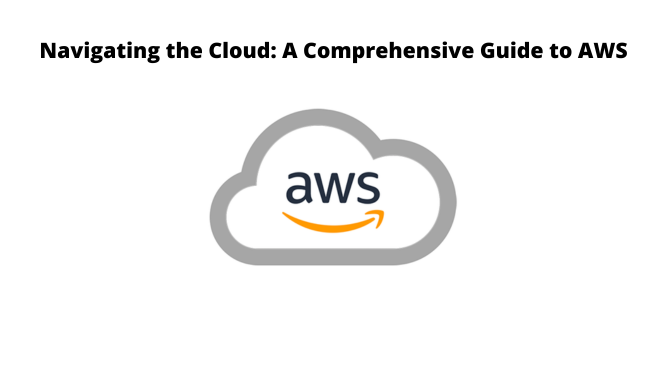Introduction:
In the rapidly evolving landscape of cloud computing, Amazon Web Services (AWS) has emerged as a frontrunner, offering a comprehensive suite of services that empower organizations to build, deploy, and scale applications with unprecedented flexibility and efficiency.
This blog post aims to be your compass in navigating the vast AWS ecosystem, providing insights into its key services, benefits, and best practices for harnessing the power of the cloud. You can make a successful career-switch in the domain of AWS cloud computing with AWS Training in Hyderabad course by Kelly Technologies.
-
Understanding AWS:
- Cloud Computing Fundamentals: AWS is a leading cloud services provider, offering a wide range of computing power, storage options, and databases on a pay-as-you-go basis.
- Global Infrastructure: AWS operates in multiple regions worldwide, each comprising multiple availability zones, ensuring high availability and fault tolerance.
-
Key AWS Services:
- Compute Services: Explore foundational services like Amazon EC2 for virtual servers and AWS Lambda for serverless computing.
- Storage Services: Utilize scalable storage solutions such as Amazon S3 for object storage and Amazon EBS for block storage.
- Database Services: Leverage managed database services like Amazon RDS, DynamoDB, and Aurora for efficient data management.
- Networking Services: Configure virtual private clouds (VPCs), use Amazon Route 53 for domain registration and DNS, and implement content delivery with Amazon CloudFront.
-
Benefits of AWS:
- Cost Efficiency: Pay only for the resources you use, allowing for cost-effective scaling.
- Scalability: Easily scale up or down based on demand, ensuring optimal performance and cost management.
- Security and Compliance: AWS provides a secure and compliant infrastructure, with features such as AWS Identity and Access Management (IAM) and AWS Key Management Service (KMS).
-
Best Practices for AWS Implementation:
- Well-Architected Framework: Adhere to the AWS Well-Architected Framework, which encompasses five pillars: Operational Excellence, Security, Reliability, Performance Efficiency, and Cost Optimization.
- Tagging Strategies: Implement effective tagging to organize and manage resources efficiently, aiding in cost allocation and resource tracking.
- Automation: Embrace infrastructure as code (IaC) tools like AWS CloudFormation and AWS CDK for automated provisioning and management of resources.
-
Security in AWS:
- Shared Responsibility Model: Understand the shared responsibility model, where AWS manages security of the cloud, and customers manage security in the cloud.
- Identity and Access Management: Implement strict access controls and least privilege principles using AWS IAM to secure resources.
-
AWS Marketplace and Partner Ecosystem:
- Marketplace Solutions: Explore the AWS Marketplace for a wide array of third-party solutions and services that complement AWS offerings.
- Consulting Partners: Engage with AWS Consulting Partners for specialized expertise and support in implementing AWS solutions.
-
Continuous Learning and Certification:
- AWS Training and Certification: Invest in continuous learning through AWS training programs and certifications to stay abreast of the latest technologies and best practices.
Conclusion: AWS stands as a powerful catalyst for organizations looking to embark on their cloud journey. By understanding the core services, embracing best practices, and prioritizing security, businesses can leverage AWS to innovate and scale in an increasingly digital landscape. As AWS continues to evolve, staying informed and adopting a proactive approach to cloud management ensures that organizations can harness the full potential of AWS to drive success and innovation in the digital era.


